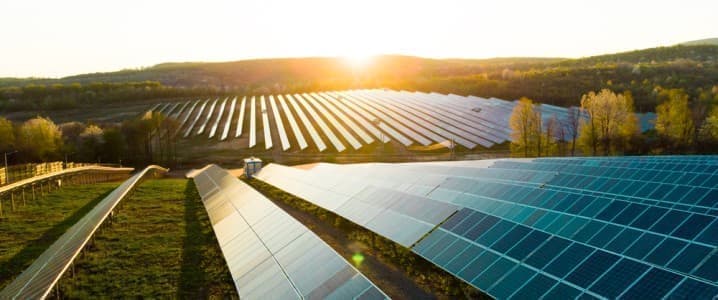The world still has a long way to go toward meeting its climate goals. Keeping temperatures from warming more than 1.5 degrees Celsius over pre-industrial averages is essential to avoiding the worst impacts of climate change, but achieving that will require an unprecedented level of commitment, investment, and cooperation from policy makers, industry leaders, scientists, and all levels of government. As global leaders start to push harder for a clean energy transition, however, the rapid expansion of large-scale solar and wind farms is stepping on toes and galvanizing opposition and NIMBYism in many of the communities where such projects are being developed.

Reaching net zero by mid-century will require the world to double its current rate of renewable expansion. According to the International Energy Agency (IEA), reaching the 2050 Paris Agreement target will require that nearly two-thirds of worldwide electricity generation is sourced from renewable resources by just 2030. This will entail adding 12% more renewable generating capacity annually for the rest of the decade – double the rate in 2021.
All that extra capacity is going to take up a lot of space. In fact, utility-scale solar and wind farms need ten times as much space per unit of power as plants powered by coal and natural gas. In an era where there is already a huge amount of competition for land use, 12% expansion each year is almost certainly going to cause some flare-up of tensions. Green energy expansion is competing with agriculture and urban expansion as it stretches into greener pastures. Renewable energies are invaluable to the wellbeing of the planet and those who live on it, but food and shelter are just as essential, making the competition for rural land both complex and fierce.
Indeed, land is one of the main concerns for investors and developers. A recent report from consulting powerhouse McKinsey states that the situation is ‘daunting.’ The report warns: “Developers need to continuously identify new sites with increasing speed at a time when the availability of suitable, economically desirable land is getting tighter.”
Some innovative responses have involved shared land use between energy and agriculture, such as using solar panels to shade vineyards, and between energy and urbanism, as in the case of rooftop solar panels in cities. However, the current push for industrial-scale renewable projects is based on intensive energy production rather than mixed-use spaces. And in the United States, the rural spaces which could potentially house massive solar and wind farms are often in counties that are less than thrilled to have a sprawling icon of the liberal agenda in their backyard.
Indeed, the American heartland has quietly (and in some cases unwittingly or unwillingly) become the country’s cradle of renewable energy. Some of the United States’ largest projects are being developed in states that are normally considered to be bastions of fossil fuels, such as Wyoming and Texas. The result has been a string of stalled projects, litigation, and grassroots galvanization against renewable projects. “Over the past year, solar projects in Ohio, Kentucky and Nevada have all been delayed or sunk by irked local people,” the Guardian recently reported. There has also been backlash at the local and state government levels, with measures restricting renewable energy facilities passed in 31 states.
Earlier this year, in a special report titled “U.S. solar expansion stalled by rural land-use protests” Reuters wrote of the widespread pushback against solar expansion at the grassroots and political levels: ”They cite reasons ranging from aesthetics that would harm property values to fears about health and safety, and loss of arable land, farm culture, or wildlife habitat.
The frequency and ferocity of these battles is only going to increase as the enormous tax credits for clean energy introduced in the Inflation Reduction Act cause a spike in new solar projects across the country. Some experts, however, think that this expansion may convert as many renewable-skeptics as it irks thanks to a proliferation of well-paid jobs associated with the expansion of infrastructure. Like it or not, the renewable revolution is already well underway in rural America. But that doesn't mean that it will continue to grow without a fight.
